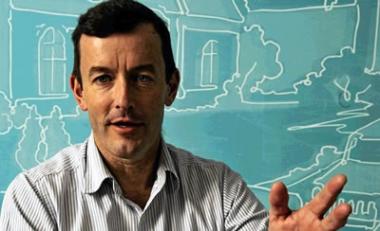Implications of S.Africa’s Interest Rate Increase
 SARB’s interest rate hike puts bets on further residential market strengthening off, but will at the same time serve to keep market behaviour healthy and free of speculative behaviour, according to FNB property sector strategist John Loos.
SARB’s interest rate hike puts bets on further residential market strengthening off, but will at the same time serve to keep market behaviour healthy and free of speculative behaviour, according to FNB property sector strategist John Loos.
South Africa's Reserve Bank (SARB) performed a volte-face, increasing interest rates across the board where it had previously been reluctant to do so.
South Africans already biting the economic bullet should brace themselves for even tougher times. This is especially the case for those with a bond on their home, or who are paying off a car, personal loan or credit card.
The interest rate was increased for the first time in almost six years yesterday.
According to FNB household and property sector strategist John Loos, yesterday’s interest rate hike puts bets on further residential market strengthening off, but will at the same time serve to keep market behaviour healthy and free of speculative behaviour.
The Monetary Policy Committee (MPC) of the Reserve Bank (SARB) served up something of a surprise by raising its policy repo interest rate by half a percentage point to 5.5%, which will in turn cause commercial banks to raise their prime lending rates from 8.5% to 9%.
The decision appeared largely Rand driven, following a sharp currency depreciation in recent times, with key changes to the SARB’s Rand assumptions now causing its CPI inflation forecasts to move outside the target range for an “extended period”. The decision was in spite of the SARB having lowered its economic growth forecasts for 2014 and 2015.
It appears to be a decision that cannot have been taken lightly, but at the end of the day the SARB does have an official 3-6% inflation target, and must be seen to be responding to severe inflationary pressures should it wish to maintain credibility.
IMPLICATIONS FOR THE HOUSEHOLD/ CONSUMER SECTOR
• The impact should be seen as “negative” from a short term consumer point of view. As the positive impact of the big interest rate cuts has been gradually wearing off through 2012/13, both real household sector disposable income growth and real consumption expenditure growth have been slowing. By now, we anticipate that these variables’ growth rates are not far from 2%, and we anticipate average real consumption growth for 2014 more likely to move down into the 1-2% range for 2014. This would be down from the average growth rate of nearer to 2.5% estimated for 2013 as a whole.
• The rate hike would further serve to contain household sector credit growth, whose November 2013 year-on-year rate had already slowed to 5.9%, from a high of 10.4% as at November 2012. We would expect further slowing in this growth in the near term.
This probably implies further containment of the household sector’s debt-to-disposable income ratio in the near term. This ratio was 75.5% as at the 3rd quarter of 2013. That level represented a decline on the prior quarter’s 75.8, and the most recent pace of growth in household sector credit is expected to remain below nominal household disposable income growth of nearer to 7%, thus bringing about a further decline in the household debt-to-disposable income ratio in the near term. This would be a positive development in terms of reducing household vulnerability to future interest rate hiking.
• The rate hike may however serve to raise the level of bad debts slightly. Taking insolvencies as an indicator of bad debt trends, we have already seen a healthy declining trend of recent years virtually coming to an end in recent months, and the rate hike may well once again push insolvencies growth into slightly positive territory. However, one lone interest rate hike would not have an extreme impact.
• Finally, a rate hike may have a very slight impact in encouraging household savings although we would not expect “miracles” in this regard, as the savings problem is a longer term structural issue that can’t be solved that easily. Household savings is very weak by historic standards, with the net savings/disposable income ratio stuck at around zero, implying that what little gross saving exists is just sufficient to cover the depreciation on fixed assets.
IMPLICATIONS FOR THE RESIDENTIAL PROPERTY MARKET
• For the residential property market, this interest rate hike is seen as a negative for growth in demand, thus likely to have a containing impact on house price growth. All bets are off regarding any noticeable rise in house price growth compared to recent levels, and single-digit price growth is expected to remain a characteristic through 2014.
• The new repo rate level, which leaves the prime rate percentage at 9%, slightly above house price growth, does not promote unhealthy short term speculative buying on a large scale, because it is not easy to borrow money at prevailing rates and make quick capital gains. From a point of view of preventing major speculative activity in the residential market, therefore, this level of interest rates would appear appropriate.
The country's largest debt counsellor, DebtBusters, said it expected 'a massive spike in home loan defaults' from consumers burdened with debt.
DebtBusters Chief executive Ian Wason said those with home loans would be the most affected.
'Not only are these consumers already faced with price hikes for electricity, rates and petrol, but many are overloaded with unsecured debt as well. This may be the final straw for many, and I would expect to see a large spike in defaults on the banks' home loan books in months ahead.'
Almost one in two credit-active consumers had impaired credit records, meaning they had missed three or more monthly payments or had an adverse listing, judgment or administration order.
One of the most obvious impacts of yesterday’s Reserve Bank (SARB) interest rate hike would be a dampening of residential home buying demand in the coming weeks and months, as certain aspirant property buyers perhaps adopt a “wait and see” approach, postponing their residential purchase until the interest rate hiking cycle appears to have passed.
This impact is likely to be seen in the form of a decline in 1st time buyers as a percentage of total home buyers, as many younger buyers have greater flexibility, being able to remain in their parents’ home for longer or to hang out in the rental market for the time being.
The impact will also be likely felt among those sellers selling in order to downscale due to financial pressure. Not only could rate hikes raise the numbers of this category of sellers of property, but it is also expected to raise the portion of these sellers that downscale into rental properties for the time being as opposed to buying a cheaper property.
This all leads to one likelihood…..stronger growth in demand for rental properties.
All in all, therefore, rising interest rates should imply stronger growth in demand for properties to rent, accompanied by slower growth in supply of properties to rent. The combination is likely to see higher rental inflation, just as we saw the last time interest rates peaked around 2008.














